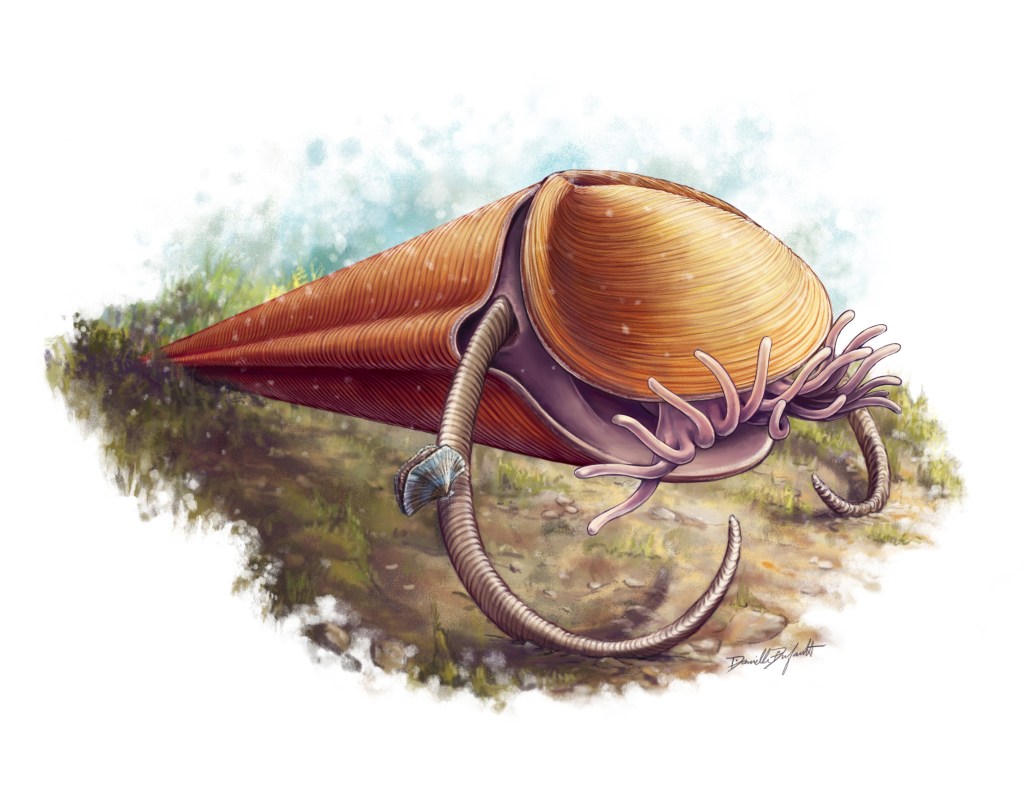Narwhals “tusking.” Image: Glenn Williams
The narwhal is such a bizarre creature that many people get well into adulthood before realizing they are real animals and not some fantastical riff on unicorns. Unlike its cetacean brethren, this Arctic whale has a striking spiral tusk that adorns the mouths of almost all males and about 15 percent of females.
The purpose of the giant face-spear has been debated for centuries, with sexual selection, breathing, hearing, and defense all floated as possible advantages. Now, a team based out of Harvard University has added to the speculation with a new study suggesting that one of the tusk’s central functions is as a sensory organ.
Videos by VICE
“It takes a tremendous amount of energy and devotion to get that thing to grow,” lead author and dental specialist Martin Nweeia said in Wired. “To expend that much energy in such a harsh environment—there has to be a pretty compelling reason to do it.”
Published in the April 2014 issue of The Anatomical Record, the paper presents evidence that narwhals can detect changing salinity ratios in surrounding water. Being able to detect these fluctuations would be very useful to narwhals because they correlate with icebergs forming (high salinity) or melting (low salinity).
To shed light on the tusk’s sensory abilities, Nweeia and his colleagues collected several samples from Inuit hunters in Baffin Island. They confirmed that the narwhal tusk has a permeable outer layer that allows seawater to enter its interior into the dentin layer. Once inside, water can run through tubes to the center of the tooth, which is filled with blood vessels and nervy pulp.
A magnified view of the tubes inside a narwhal tusk. Image: Frederick Eichmiller, Paffenbarger Research Center
Unless you are getting a root canal, the nerves of your pearly whites are never exposed in such a dramatic way. But the narwhal tusk is uniquely sensitive to its surroundings, and seems to constantly be sifting the waters through its toothy laboratory for various risk factors.
Nweeia’s team saw this process in action during their experiments. They constructed a plastic cylinder they called a “tusk jacket and slipped it over a live narwhal’s tusk, filling the tube with water of varying salt concentrations. The higher the salinity, the higher the animal’s heart rate, possibly because it feared getting trapped in a rapid onset ice flow. But regardless of the reason, the results suggest that narwhals can funnel water into their tusks to measure its salt concentration.
The tooth’s sheer strangeness implies it plays a more complex role in the animal’s life than other tusked mammals. It is the only straight tusk in the world—the erupted teeth of elephants, rhinos, and walruses are always curved. Surprisingly, it is also very flexible, and can bend about a foot before snapping.
It is also the longest canine tooth in the world, measuring up to nine feet, well over half of the narwhal’s body length. Of the animal’s two teeth, it is always the left that ends up bursting through the jaw and growing into the narwhal’s characteristic ‘horn.’ “Nothing about this tooth makes any sense,” Nweeia said in a Explorers Club paper. “It defies almost every known principle in the expression of mammalian teeth.”
The pervasive mystery of the narwhal tusk endures partly because studying these animals is frustratingly difficult. They live in some of the most remote areas of the world, and hide under ice caps half the year. It’s possible that their iconic tusk is used for every one of the many functions scientists have pinned to it over the centuries, and it would not be surprising to find even more superpowers hidden in the specialized tooth.
The narwhal may often be mistaken as a fictional beast, but the real world version is so much cooler.



